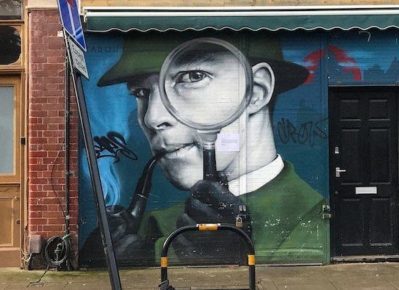
The Adventures of a Process Server
The Adventures of Sherlock Holmes is a collection of short stories which, as the title suggests, chronicle the many adventures of Sir Arthur Conan Doyle’s famed detective, Sherlock Holmes, and his friend and confidant, Dr. Watson. In one of the short stories, “A Case of Identity”, Sherlock asks Watson what he observed about the client they just met. After Watson describes the client, Sherlock applauds his friend’s efforts, but tells him that there were many important details that were unaccounted for. Sherlock then reminds Watson to “[n]ever trust to general impressions…but concentrate…upon details”.
Much like Sir Arthur Conan Doyle’s famed consulting detective, a good process server never trusts general impressions, but concentrates upon details. This is because a process server’s work demands different areas of focus at different times. In fact, a process server must wear multiple “hats” over the course of their day, taking on different roles. There are times where they may need to spend more time in a particular role, but in all of the following roles a process server must play, a proficiency in observation is essential to effect successful service of a client’s legal documents.
The Analyst
When a process server is assigned a file from their client, they are provided with the name of the person who needs to be served, where the individual resides, and the legal documents to be delivered. Sometimes, the instructions will include additional notes with the person’s phone number, email address, business address, or indicate that service should be on a rush basis by a given time or date. Paying close attention to the specifics of a client’s instructions is critical as errors can lead to costly delays. There are times however, when a process server does not have information beyond a name, residential address, and the legal documents, and will need to perform additional research.
The Researcher
In addition to determining the address for service, a process server must also locate the intended recipient of the legal documents, which can be challenging. Process servers are excellent at locating a person’s whereabouts and are attentive to any details which could help them determine where a person would be to effect service.
Looking through public records, searching online databases and social media sites are some of the ways process servers gain insight into the person they are serving. Searching a person’s name might alert the process server to the individual’s profession and give a better idea of when they might be home to receive the documents. Photos on an individual’s social media account could reveal that an individual is away on holiday, what kind of personality they have, who else is at the residence, and in some cases, what vehicle the person drives. In their research, process servers may also discover news articles that reveal important information about an address for service. The address for service might be a business that recently closed down or an article may indicate a new tenant, who is not the recipient of the documents, moved into the address for service.
The Scout
After gathering all the necessary details and planning a route for service, a process server will drive out to the place for service. At the address, the process server will take visual note of the surroundings, including the type of building they are at, who appears to be home if it is a place of residence, whether or not the person’s name is listed on the directory of the building, who the property manager is if it is a residence with secured entry, and other signs such as mailbox numbers or license plates that would indicate the identity of the homeowner.
The process server may have to make several stops before finding or connecting with the person they are seeking. If the service of the documents is time sensitive, the process server may also have to visit surrounding public locations such as coffee shops, libraries, gas stations, restaurants, or be directed to other residential addresses, courthouses, or places of employment to locate and serve the documents.
The Courier
A process server who arrives at the correct location may meet the intended recipient. After verifying that the individual is the person named in the legal document, the process server will proceed to hand over the documents.
If the first attempt to serve documents is unsuccessful, a process server will return to their vehicle and take detailed notes of the attempt on their smartphone or computer. These logs which may include photographs of the location for service, are records which clients can use for subsequent applications in their legal matter.
No “Typical” Days
Being a process server means there is no “typical” day, and each file presents an adventure of its own. In this way, the job is very dynamic and sometimes unpredictable. Despite the twists and turns that may arise during service, West Coast Process Serving is equipped with the knowledge and expertise to ensure your legal documents are delivered quickly and professionally.
